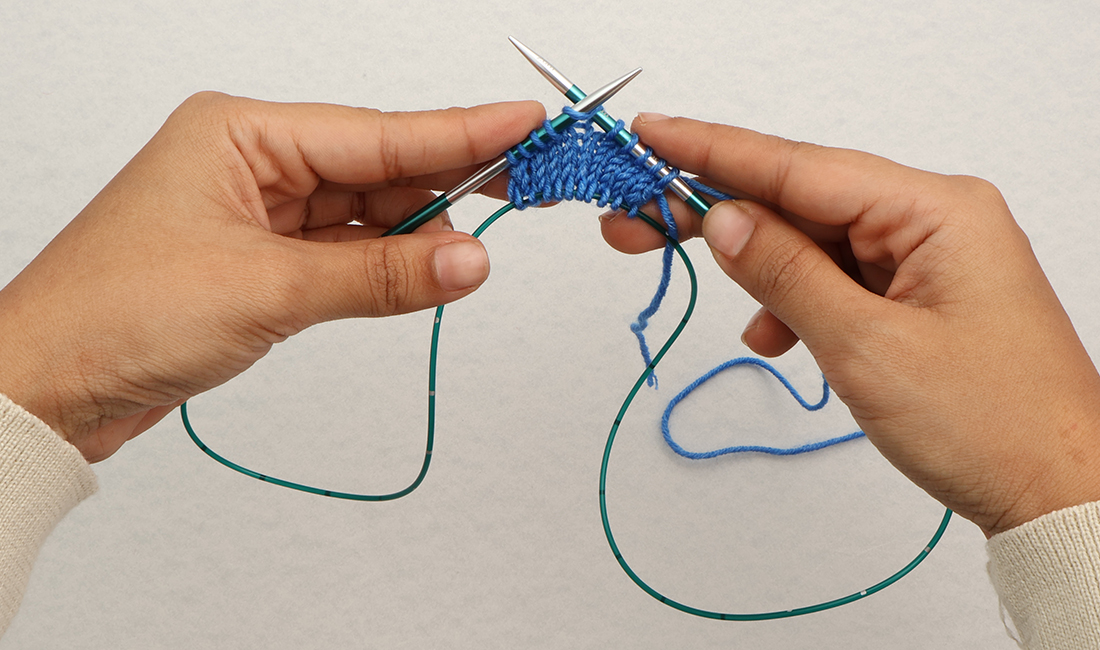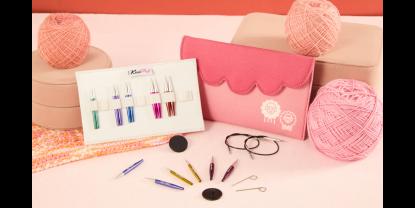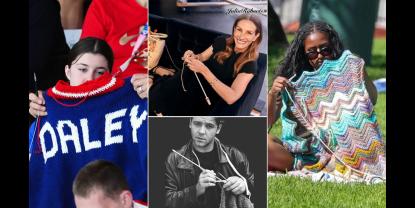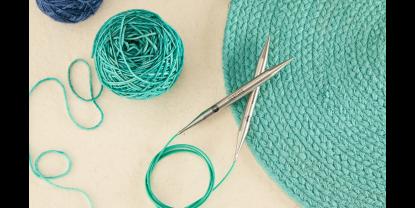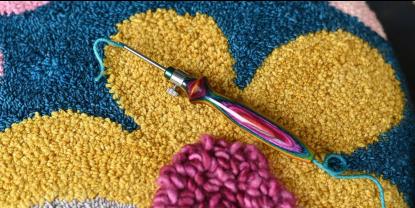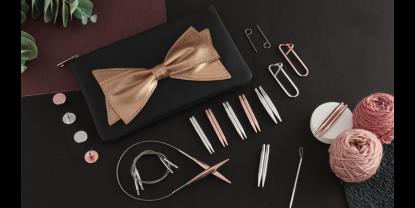In knitting, there are various ways to cast on stitches on the knitting needles. Choosing a cast on depends on the knitting project (there are different methods suitable for socks, hats, garments, and other projects), the knitter’s skill level and comfort, and sometimes the yarn. In this blog, we’ll explore the magic cast on technique, also known as Judy’s magic cast-on. An innovative idea by Judy Becker, a longtime knitter and designer, it’s a wonderful way to cast on stitches for toe-up socks. It is also known as the magic toe-up cast on.
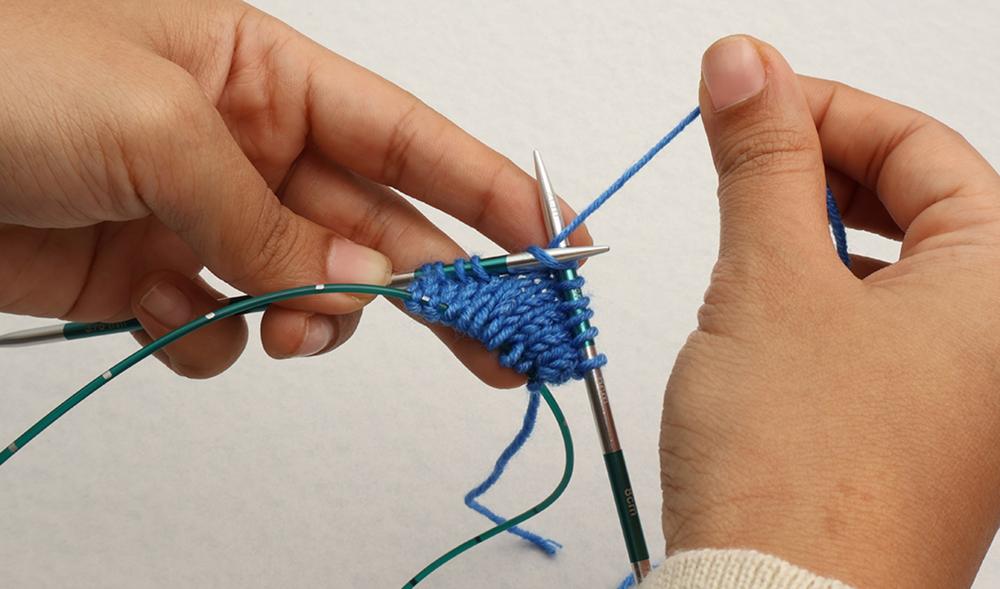
What is the Magic Cast On technique?
In 2006, in an issue of the Knitty Magazine, Judy Becker shared her experiment with a cast on technique for toe-up socks. Explore the original guide on the magic cast on technique here.
What You’ll Need
Knitting Needles: This cast on technique works with any knitting needles of your choice. Whether you are working on socks with double-pointed needles, using the magic loop method with circular knitting needles, or knitting two socks at a time, the cast on method comes in handy. Just make sure that the needle size matches the yarn weight.
Once the cast-on technique was featured in the magazine issue, more and more knitters tried and even experimented with their own style.
Skill Level: Intermediate
Estimated Learning Time: 30 minutes
Step-by-Step Instructions for Magic Cast On
Step 1 - Set Up the Knitting Needles
Make a slip knot and place the loop around one of the needles. The anchor loop will count as the first stitch.
Hold the two needles together, parallel to each other with the tips facing the same direction. Let’s consider the upper needle as Needle #2 while the lower needle is Needle #1. The slip knot should be on Needle #2 with the needle that the yarn is attached to toward the top.
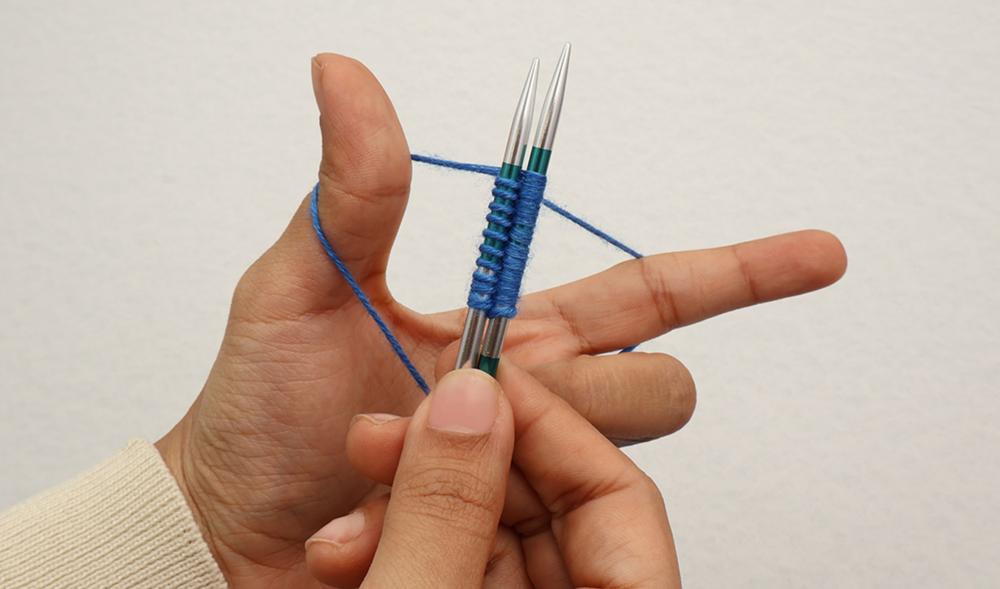
Step 2 – Set up the Yarn in a Slingshot Position
You’ll need to hold the yarn in a very similar way to a slingshot, a position that you generally see for a long tail cast on.
Grab both ends of yarn in your left fist, and then separate using your pointer finger and thumb. The tail end should be over your pointer finger and the working end should be over your thumb.In your other hand, hold the yarn so that the tail goes over your index finger and the working yarn (the yarn that leads to the ball) goes over your thumb. This is the opposite of how the yarn is usually held for a long-tail cast-on.
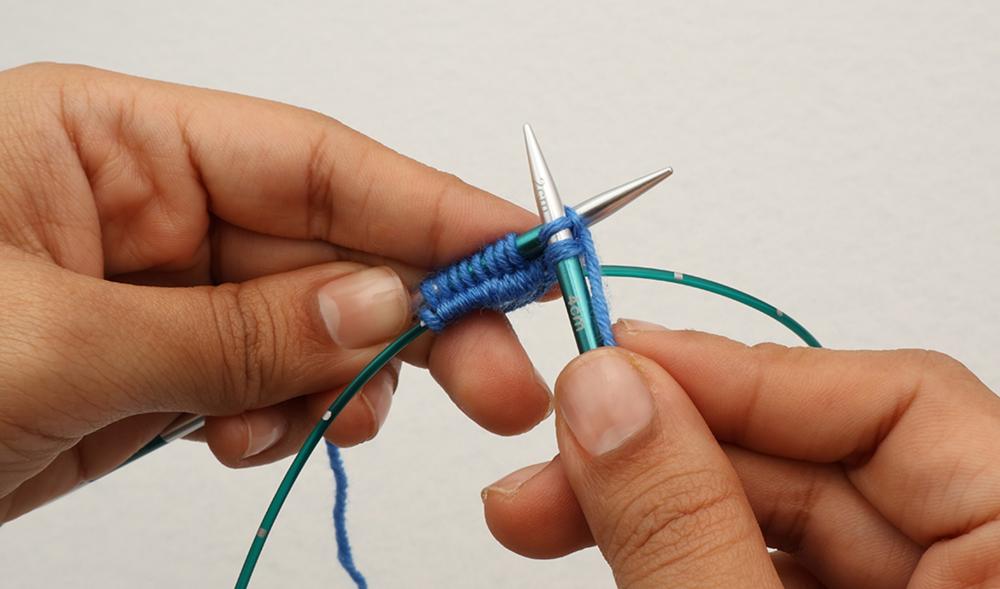
Step 3 – Begin the Needle Movement
Bring the tip of needle #1 over the strand of yarn on your finger, around and under the yarn, and back up, making a loop around needle #1. Now pull the loop snug, but not tight, around the needle.
You have cast one stitch onto needle #1.
Bring needle #2 over the yarn tail on your thumb, around and under the yarn and back up, making a loop around needle #2. Pull the loop snug around the needle.
You have cast one stitch on to needle #2.
There are now two stitches on needle #2 Ñ the stitch you just cast on plus the anchor loop.
The top yarn strand always wraps around needle #1 (the bottom needle), and the bottom yarn strand always wraps around needle #2 (the top needle). Just remember: Top around bottom, bottom around top.
Step 4 – Repeat the Steps to Cast On
Repeat step to cast a second stitch on to needle #1. (bottom around top)
Repeat step to cast a third stitch on to needle #2. (top around bottom)
Continue repeating the steps, alternating between needle #1 and needle #2, until you have cast on the desired number of stitches. You will have the same number of stitches on each needle.
With this guide, you’ve cast on stitches on your knitting needles.
Now, as mentioned earlier, the cast on method works with any knitting needle. You can use knitting needle tips of the same circular knitting needle (fixed or interchangeable), two double-pointed knitting needles, or even two circular needles.
Alternative Methods
While Magic Cast On excels for toe-up socks, consider these alternatives for different projects:
- Turkish Cast On: Similar result, a different technique
- Figure-8 Cast On: Another center-start option that has a neat effect but sometimes needs to be tightened up in later rounds.
- Provisional Cast On: When you need live stitches later
Handy Tips for Success with the Magic Cast On
- Maintain consistent tension throughout. If you have uneven stitches, the yarn is too tight; if gaps are showing, then the yarn is too loose.
- Count stitches regularly as you cast on. Make sure to place stitch markers to identify the start. You can also use a row counter for the project.
With this guide, get ready for the magic cast on technique for toe-up socks and other interesting projects. If you are planning a project that requires you to knit a circle, this cast on is a handy method.
Video Tutorial
Video Courtesy - Staci Perry | YouTube Channel - @verypinkknits


